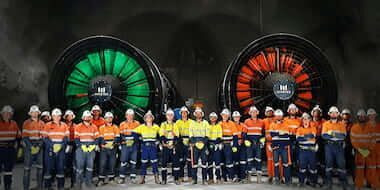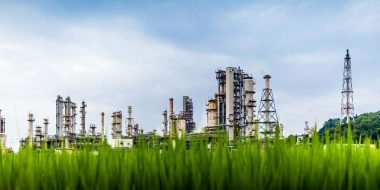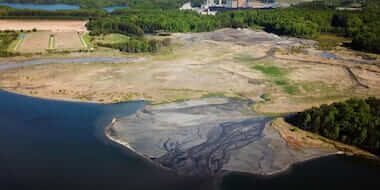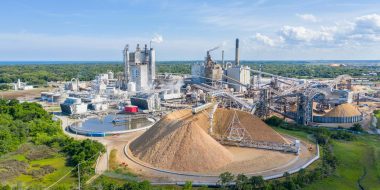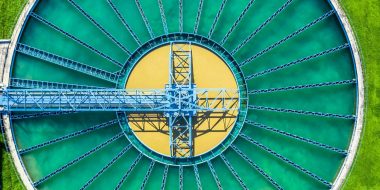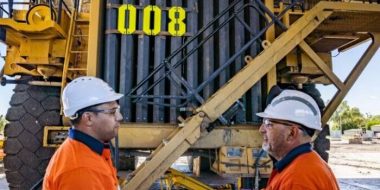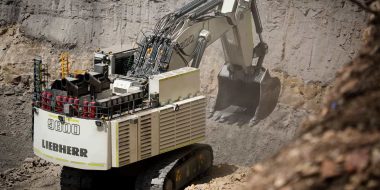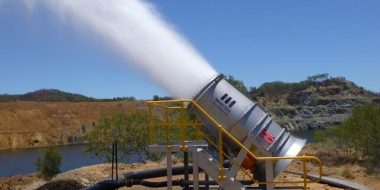There are thousands of active tailings storage facilities (TSFs) or water tailings located around the world. Tailings dams store mine-affected, acid, caustic and/or brine water generated through industrial processes. Industries such as mining, oil & gas, power generation, landfills & food processing facilities often utilise TSF as part of their water management strategy, however, there are risks involved.

What are water tailings?
Tailings dams are typically earth-filled embankments designed to store water that has been affected by industrial processes, such as mining. Water tailings hold the water that is left over after the process of separating minerals from ore.
Water held in tailings dams or ponds is often contaminated with heavy metals and other toxins. Therefore, managing toxic wastewater comes with high risks, as there are devastating environmental consequences if the dam fails or if water was to leak into groundwater.
Water tailings can store an array of liquids, solids, or a slurry of toxins and potentially radioactive fine particles. The removed solids, known as sludge, are extracted and used for various applications. Tailings sludge can be used to make sustainable by-products used in agriculture, landscaping, and construction industries.
While water tailings can have negative environmental impacts, they are necessary for many industries to manage wastewater. When done correctly, water tailings can be an important tool in protecting the environment from toxic waste.
What is the purpose of water tailings dams?
The purpose of water-tailing dams is to store the waste material from the mineral separation process and to prevent it from causing environmental damage. Water tailings are a type of wastewater that is produced when minerals are separated from the ore. often water is contaminated with heavy metals and other toxins.
TSF can be used to separate water from the tailings, enabling the release of recycled water back into water sources. Typically there are water quality standards and environmental requirements around the release/discharge of treated tailings water back into the environment. In Australia, the Environmental Protection Authority (EPA) regulates pollution associated with water tailings by monitoring requirements and pollution limits, including permitted discharges.
Tailings disposal methods include slurry disposal, thickened and paste disposal, dry stacking and disposal of coarse wastes, including coalmine coarse reject, metalliferous smelter scats or slag, and waste rock or soil. There are processes to repurpose waste, grinding up rock into fine sand can help extract valuable minerals or metals from the rock ore. All the unrecoverable and uneconomic remnants from this process are waste.

Risks associated with tailing storage facilities (TSF)
Water tailings can be a source of water pollution if they are not managed properly. There are high risks associated with TSFs with dire environmental consequences if they fail. TSF failures cause significant environmental damage and potential loss of human life. For example, the Samarco tailings dam failure in Brazil in 2015 led to 19 deaths, devastating environmental impacts and economic losses. Based on historical data, water tailings dams are 10 x more likely to fail in comparison to water dams.
The Mount Polley disaster in BC Canada saw approximately 25 million cubic metres of contaminated water and 4.5 million cubic metres of solid mine waste released into the environment when the tailings dam collapsed in 2014. The long-term environmental damage is still being assessed, however, it is clear that there was a significant impact on fish and wildlife in the area.
Recently, the Jagersfontein Diamond Mine in South Africa catastrophically failed in September 2022, triggering mudslides that killed and injured multiple people. In November 2022 another Diamond mine’s tailings dam breached resulting in flooding. The Williamson Mine in Tanzania reported no injuries with emergency services on-site to ensure the safety of the community.
The consequences of a failed TSF can be significant, which is why it’s essential for industries to have comprehensive water tailings management strategies in place.
Water tailings can also pose a risk to human health if they’re not managed properly. Water tailings can contain harmful chemicals and pollutants that can leach into groundwater and contaminate drinking water supplies. In some cases, people living near water tailings dams have been known to experience health problems such as skin rashes, respiratory problems and gastrointestinal issues.
It’s therefore essential that industries take the necessary steps to ensure that their water tailings are properly managed and pose no risk to human health or the environment.
Tailings Management Tips
There are a few things you can do to reduce the risk of water pollution from water tailings:
- Store water tailings in lined pits, ponds or tanks to prevent them from leaching into the ground.
- Cover water tailings with an impermeable cover such as plastic to prevent rainwater from coming into contact with them.
- Ensure that water tailings won’t fail even during extreme weather events.
- Guarantee that safety takes precedence over cost
- Apply best practice techniques and adopt innovative technologies such as mechanical water evaporation to assist with reducing TSF water levels.
- Never build facilities within the TSF line of failure.
- Integrate water tailings planning into mine planning
- Evaporating tailings to reduce the overall water content
- Utilising adequate liners between the tailings and the surrounding environment
- Continued TSF monitoring and management
- Ensure TSF can within the probable maximum flood & maximum credible earthquake without failure.

Tailings water management technology
MINETEK’s innovative water evaporation technology helps industrial operators around the world effectively manage and mitigate risks associated with storing waste or mine-affected water. Our solutions are designed to reduce risk and potentially save lives, manage excess water in critical mining infrastructure and improve water quality management in outflow processes.
We understand the need to manage processes and produced water throughout the lifecycle of a mine site to achieve true economic and environmental sustainability. We have developed a range of water evaporation and automated and integrated water quality management solutions to help mining operators meet the expectations of their stakeholders.
From excess water removal, ensuring the safe operation of potentially dangerous tailings dams, through to acid mine dewatering and the removal of toxic metals to improve the quality of water released back into the environment. MINETEK has a solution to meet the strictest of regulations and satisfy operational and broader community expectations. Contact us to discover how MINETEK can help you or leave your details below to learn more.

